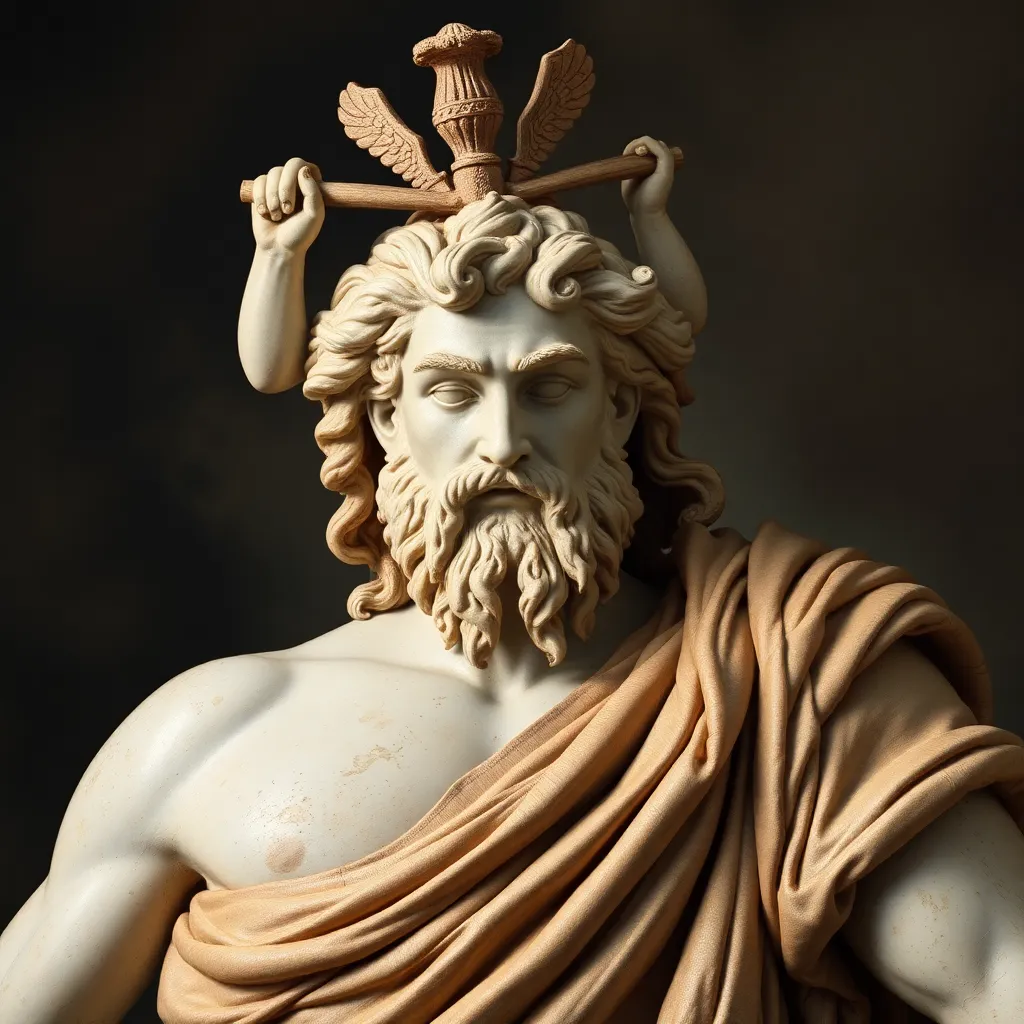Perseus in Art: Depictions Through the Ages
I. Introduction
Perseus, one of the most celebrated heroes in Greek mythology, is known for his daring exploits and adventures. His story, which includes slaying the Gorgon Medusa and rescuing Andromeda, has captured the imagination of artists across centuries. The significance of Perseus as a subject in art stems from his embodiment of the hero archetype, showcasing themes of bravery, cunning, and the triumph of good over evil. This article explores the various artistic representations of Perseus throughout history, highlighting how each era has contributed to the evolution of his image.
II. The Myth of Perseus
The myth of Perseus begins with his birth, the son of Zeus and Danaë, who was confined to a tower by her father. Following an oracle’s prophecy, Perseus’s grandfather, King Acrisius, sought to eliminate him. However, Perseus and his mother were saved by Zeus, who transformed into golden rain. The hero’s most notable feats include:
- Slaying Medusa, the snake-haired Gorgon whose gaze could turn people to stone.
- Using Medusa’s head as a weapon to defeat the sea monster Cetus and rescue Andromeda.
- Ultimately fulfilling the oracle’s prophecy by inadvertently causing King Acrisius’ death.
Key themes associated with Perseus include heroism, vengeance, and the interplay between fate and free will. His adventures often symbolize the struggle against chaos and the journey toward self-discovery, influencing generations of artists to depict his story.
III. Ancient Artistic Representations
Ancient Greek art provides some of the earliest representations of Perseus, particularly through pottery and sculpture.
A. Early depictions in Greek pottery and sculpture
Vases from the Geometric and Archaic periods often illustrate Perseus’s encounters with mythological creatures. These artworks typically emphasize action and movement, capturing the dynamic nature of his heroic deeds.
B. Notable works from the Classical period
During the Classical period, artists began to focus on realism and human emotion. Notable works include:
- The “Perseus and Medusa” relief from the temple of Athena in Delos.
- Statues such as the “Perseus” by the sculptor Praxiteles, which portrayed the hero with a sense of grace and beauty.
C. The role of Perseus in frescoes and mosaics
Perseus also appears in various frescoes and mosaics, often depicted in scenes of his most famous exploits. These works not only celebrate his adventures but also reflect the values of the society that created them.
IV. Renaissance Reimagining
The Renaissance marked a revival of classical themes, leading to a renewed interest in Greek mythology, including the story of Perseus.
A. The revival of classical themes in Renaissance art
Artists sought inspiration from ancient texts and sculptures, reinterpreting mythological narratives through a contemporary lens.
B. Prominent artists and their interpretations of Perseus
Two notable examples include:
- Benvenuto Cellini’s “Perseus with the Head of Medusa”: This stunning bronze sculpture captures the dramatic moment after Perseus has slain Medusa, with her head prominently displayed. The intricate details and dynamic pose exemplify the mastery of Renaissance art.
- Other notable Renaissance works: Artists like Andrea del Sarto and Michelangelo also created pieces that featured Perseus, showcasing the hero’s valor and the underlying themes of transformation and redemption.
C. Symbolism and allegory in Renaissance depictions
Renaissance artists often infused their works with deeper meaning, using Perseus to symbolize the triumph of reason and virtue over chaos and evil.
V. Baroque and Romantic Representations
The Baroque period introduced dramatic expressions and intense emotions in art, influencing portrayals of Perseus.
A. Dramatic interpretations during the Baroque period
Artists like Gian Lorenzo Bernini created dynamic compositions that captured the tension and excitement of mythological narratives. Bernini’s “Perseus” vividly depicts the hero’s triumph and the emotional aftermath of his victory.
B. The impact of Romanticism on Perseus’s imagery
The Romantic movement further emphasized individual emotion and the sublime, often portraying Perseus in a more introspective light. Artists like Eugène Delacroix explored themes of heroism intertwined with personal struggle.
C. Key artists and their contributions to the Perseus narrative
Throughout the Baroque and Romantic periods, artists continually reinterpreted Perseus, reflecting the evolving cultural and emotional landscapes of their times.
VI. Modern and Contemporary Interpretations
In the 20th and 21st centuries, the depiction of Perseus has evolved significantly as artists explore new media and styles.
A. Evolution of Perseus in 20th and 21st-century art
Modern interpretations often challenge traditional representations, incorporating abstract and conceptual elements to convey complex themes of identity and existentialism.
B. Diverse artistic media and styles influencing Perseus’s depiction
From installations and performance art to graphic novels and digital media, the story of Perseus continues to inspire innovation. Artists like Damien Hirst have reimagined mythological themes through contemporary lenses.
C. Themes of heroism and identity in modern portrayals
Contemporary depictions often examine the nature of heroism, questioning traditional narratives and exploring the multifaceted nature of identity, power, and morality.
VII. The Influence of Perseus on Popular Culture
The myth of Perseus has permeated popular culture, influencing various forms of media.
A. Adaptations in film, literature, and graphic novels
Films such as “Clash of the Titans” and modern retellings in literature and graphic novels have introduced Perseus to new audiences, often reinterpreting his character and adventures.
B. The lasting legacy of Perseus in contemporary storytelling
Perseus’s story serves as a template for hero narratives, reflecting timeless themes of bravery, sacrifice, and the quest for identity.
C. Cross-cultural interpretations of the Perseus myth
Across cultures, the themes of Perseus’s story resonate, leading to adaptations that reflect local values and beliefs, showcasing the universal nature of myth.
VIII. Conclusion
The artistic journey of Perseus through the ages underscores the hero’s enduring relevance in art and culture. From ancient pottery to contemporary installations, each depiction reflects the values, beliefs, and artistic trends of its time. As we look to the future, the continued exploration of mythological representations will undoubtedly inspire new interpretations and meanings, ensuring that the legacy of Perseus remains vibrant and influential.




